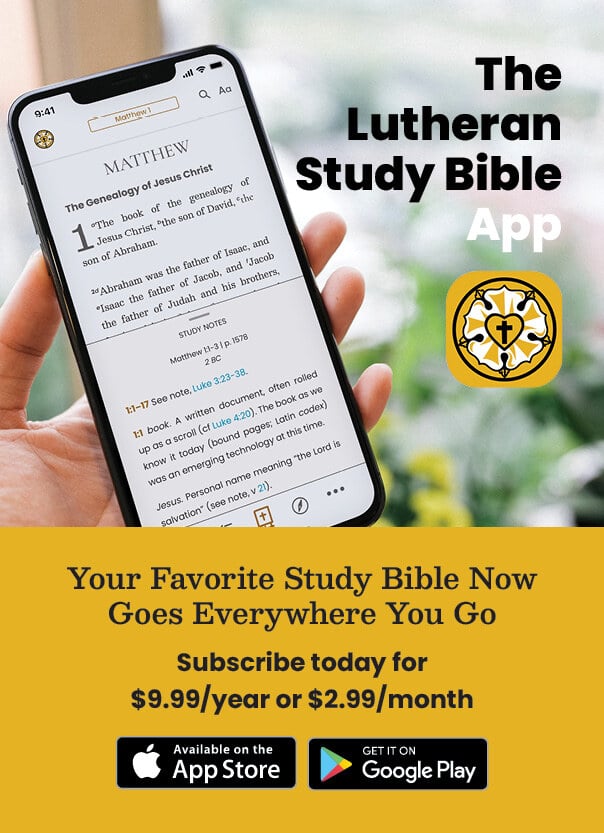Why the Cross Is Central to Christian Spirituality
A better term for “Lutheran” spirituality is “evangelical” spirituality. The term evangelical is simply a term derived from the Greek word for “Gospel,” which in turn literally means “good news.” To be “evangelical” means focusing on the Gospel of Jesus Christ, the Good News that Christ, through His death and resurrection, has won forgiveness for sinful human beings and offers salvation as a free gift.
4 Tips for Navigating Advent As Christians
I sat with some friends back in October, talking about when we put up Christmas trees as kids. Everyone in the group said “the day after Thanksgiving” except one. She had grown up putting up her tree on Christmas Eve. Where she was from, Advent was Advent and Christmas was Christmas. But that’s not so easy today.
5 Reflections on Giving Thanks to God
Our homes are adorned with decor inscribed with “Thankful” and “Blessed.” We often utter “Thanks be to God!” in worship. We have holidays dedicated to giving thanks. But do we truly have gratitude in all of this? This blog post, adapted from Portals of Prayer Devotional Bible, offers five reflections to help you ponder and give thanks for God’s gifts.
Hands-On Christmas Resources for Kids
Ahh, Christmastime as a parent. Christmas is a busy time of year for anyone, but as someone with young children, there’s an added pressure in the air. There are all the things to remember—buying gifts for your children’s teachers, bringing cookies after the Christmas concert, and perfectly coordinating schedules so you can attend as many Christmas parties and family gatherings as possible.
What Disagreements Led to the Nicene Creed?
The controversy over the relationship between the Father and the Son (and, later, the Spirit) broke out in the first half of the fourth century AD, but the source of the controversy goes back 1,700 years before that, to Moses.
From 1838 to Today: A Reflection on American Lutheranism
The Concordia Publishing House team recently took a field trip to Perry County, Missouri. This place is as much the original home of The Lutheran Church—Missouri Synod (the LCMS, our parent church body) as is St. Louis, Missouri, though not as well known.
Five Favorite Christmas Activities for Families
Concerts, shopping trips, gatherings, and other tasks often take up a lot of our time during the season of Advent. None of these activities are inherently bad, but they can take our attention away from the real reason to celebrate Advent—the birth of our Savior, Jesus. We’ve assembled a list of five activities that busy families can use this Advent to intentionally focus on Christ.
Why Do We Need the Lutheran Confessions in a Secular World?
At the end of October every year, Lutherans all over the world celebrate Reformation Day. In protestant reverie, they think gratefully of the first time they heard of salvation by grace through faith in Christ and faith alone, grace alone, and Scripture alone. Beyond this, a great number of Lutherans would struggle to explain what it is that makes the Lutheran faith distinctive. I studied the Lutheran Confessions at Concordia University Chicago and Concordia Theological Seminary. Yet I wonder just how much exposure the average lay Lutheran has to the teachings of the Lutheran tradition.
What Are the Propers in Worship?
The content of the service we look forward to this coming Sunday morning really does come down to us through millennia. This blog post, adapted from Carl C. Fickenscher II’s book Looking Forward to Sunday Morning: Reflections on the Church Year outlines the structure of the church year and the rich, interconnected content we experience in the liturgy.
How Jesus Welcomed the Lost
Time and again in his Gospel account, the evangelist Luke draws our attention to Jesus’ practice of welcoming people to dine with Him. As might be expected, His disciples regularly ate meals with their rabbi, but Jesus welcomed a much greater circle to His table. Luke reveals that the downtrodden and the outcast were often guests where Jesus dined.
The following blog post is adapted from Kristopher Whitby’s book Come and Be Filled: Feasting with Jesus in His Word.

























